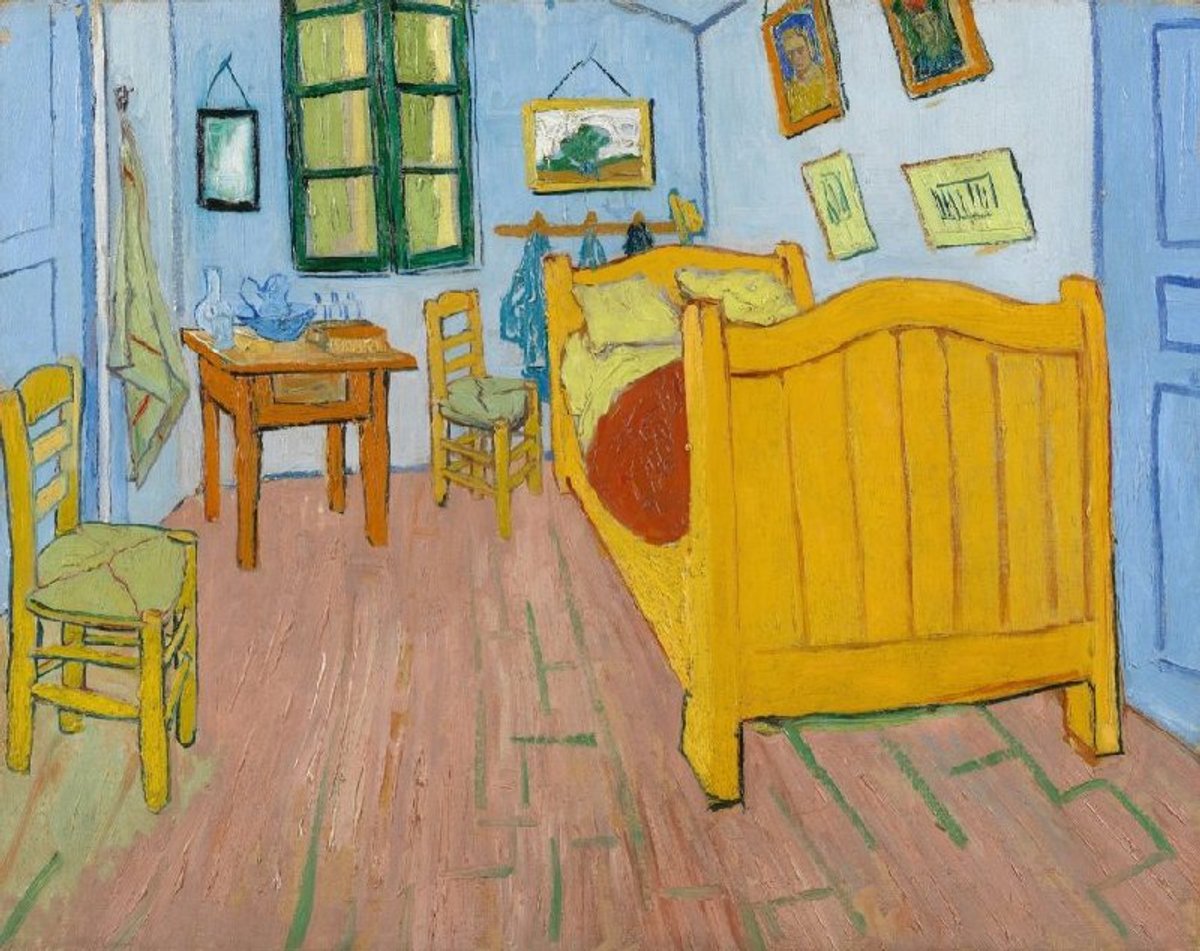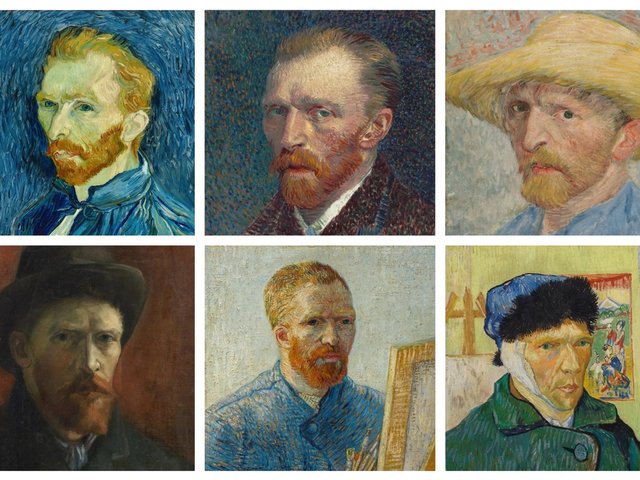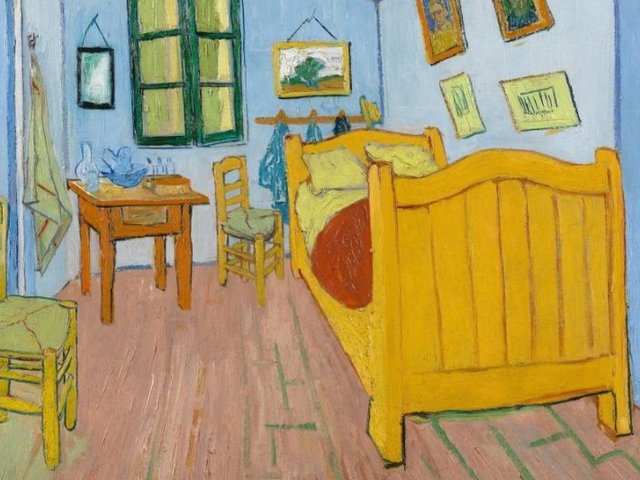An artist might well hang their most personal paintings in their bedroom and the most important above their bed. Bedroom pictures were particularly significant for Van Gogh, since he would sometimes plan his next works before dozing off to sleep. As Vincent wrote to his brother Theo: “The most beautiful paintings are those one dreams of while smoking a pipe in one’s bed.”
So what did Van Gogh chose to display in his room in the Yellow House, his home in Arles? When he initially painted The Bedroom (October 1888) he placed a framed landscape above his pillows and at the side of his bed were portraits of two good friends, the artist Eugène Boch and the soldier Paul-Eugène Milliet. He had completed both portraits a month before depicting them in The Bedroom.

Van Gogh’s Portrait of Eugène Boch (September 1888) and Portrait of Paul-Eugène Milliet (September 1888)
Credits: Musée d’Orsay, Paris and Kröller-Müller Museum, Otterlo
Boch, whom he described as “the poet”, was a Belgian artist who was working in Arles. His sister Anna later became the only person to have bought an identified Van Gogh painting during his lifetime.
Milliet, who served in the Zouave regiment, was characterised by Van Gogh as “the lover”, because of the soldier’s reputed success with young women. On 2 October 1888 Van Gogh wrote to Boch to say that the portraits of him and Milliet are “in my bedroom".
Below the two portraits in The Bedroom are sketchy impressions of two framed works, possibly Japanese prints, which Van Gogh greatly admired. Above the washbasin is a mirror, which he probably used when making self-portraits.
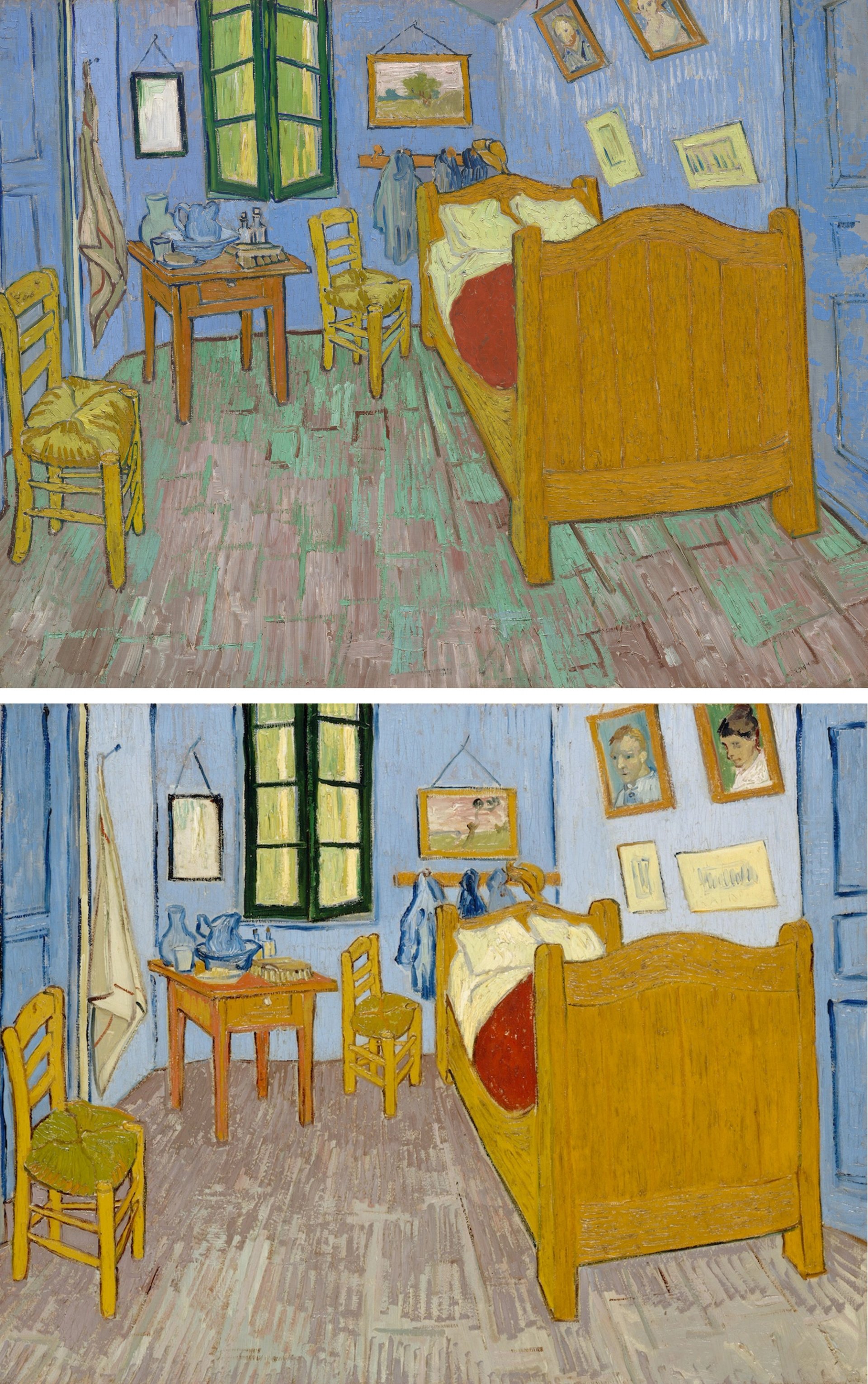
Van Gogh’s later copy of The Bedroom (September 1889), now in Chicago, and his smaller replica of The Bedroom (September 1889), now in Paris
Credits: Art Institute of Chicago and Musée d’Orsay, Paris
Nearly a year later he made two painted copies of The Bedroom, a full-size one and a smaller replica to send to his mother Anna and youngest sister Wil (Willemien). By this time he had left the Yellow House and moved to the asylum just outside Saint-Rémy-de-Provence. Interestingly, he changed the two portraits, presumably to please his mother and sister.
Boch was replaced by a self-portrait (September 1889), one showing him, unusually, without a beard. He also sent this self-portrait to his mother and Wil. The other portrait, replacing Milliet, is of a woman and does not correspond to any known painting by Vincent. I tentatively suggest that it might depict his sister Wil, who was then aged 27. We know her face from several photographs and a considerably earlier drawing by Vincent (July 1881).

Van Gogh's Self-portrait without a Beard (September 1889) and Portrait of Wil (Willemien) van Gogh (July 1881)
Credits: private collection and Kröller-Müller Museum, Otterlo
This leaves the question of the landscape hanging above Van Gogh’s pillow. It changes somewhat in the three compositions of The Bedroom, but again it does not correspond to any known painting by Van Gogh. It could be a real work which has been lost, but the fact that it varies in the three compositions means that it is more likely to be an imaginary Provençal landscape with a tree.

Details of the landscape in the three versions of The Bedroom: the works now in Amsterdam, Chicago and Paris
Credits: Van Gogh Museum, Amsterdam (Vincent van Gogh Foundation), Art Institute of Chicago and Musée d’Orsay, Paris
When Vincent sent the smaller replica of The Bedroom and the self-portrait to his mother and sister, at a time when they were moving to a new house in Leiden, he wrote modestly: “Don’t feel uncomfortable about hanging them in a corridor, in the kitchen, on the stairs.” The Bedroom is now one of the star works in the Musée d’Orsay in Paris. In 1998 the self-portrait sold for $72m (equivalent to $135m today).
Other Van Gogh news:
Two Van Gogh drawings are coming up for auction in London.
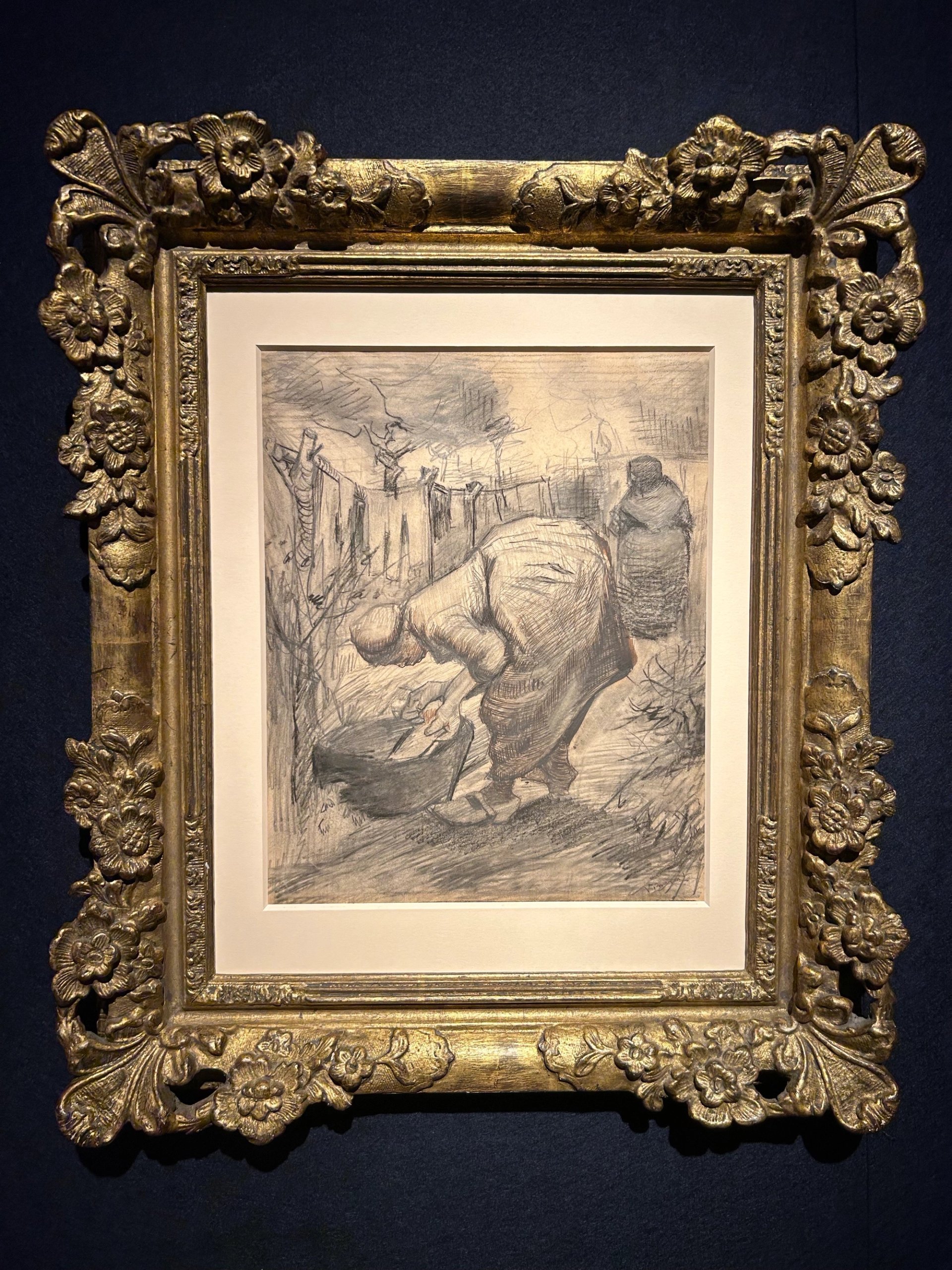
Van Gogh’s Woman by the Wash Tub, in a Garden (September-October 1885)
Credit: The Art Newspaper
Woman by the Wash Tub, in a Garden (September-October 1885) is being offered by Christie’s on 28 June, estimated at £1.2m-£1.8m. This finely worked, signed work was drawn in Nuenen, the village of Vincent’s parents. It was once in the celebrated collection of the Swiss collector Robert von Hirsch.
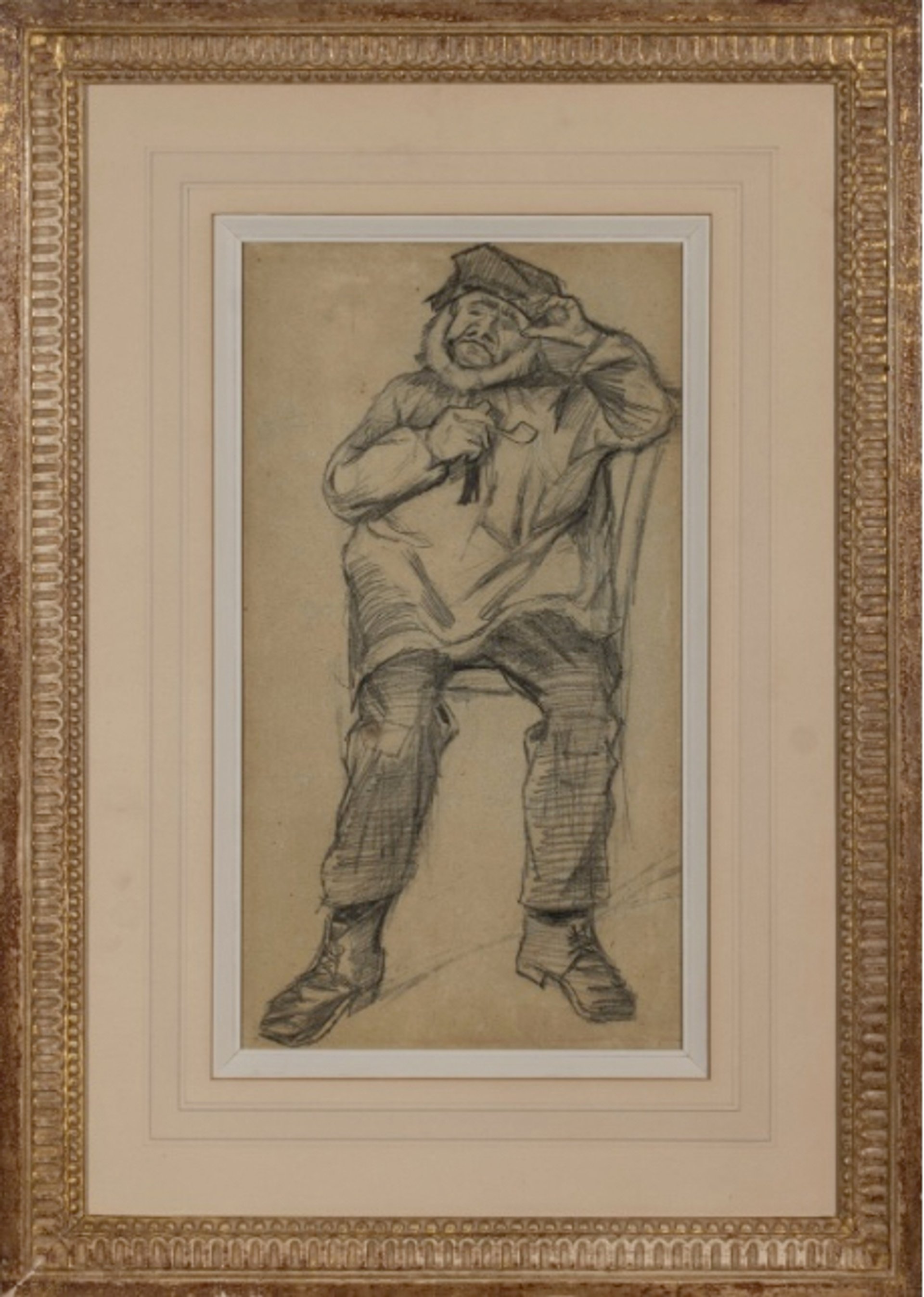
Van Gogh’s Orphan man, wearing a Blouse, sitting with a Pipe (autumn 1882)
Credit: Sotheby’s
Orphan man, wearing a Blouse, sitting with a Pipe (autumn 1882) is an earlier work, done when Van Gogh was living in The Hague. The drawing depicts a resident of a nearby almshouse. It is coming up at Sotheby’s on 28 June, with an estimate of £250,000-£350,000. The seller is a Japanese collector.


